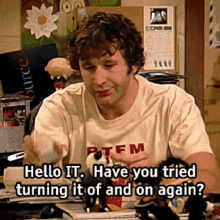The bridge is basically valueless compared to everything else about the ship and cargo plus the lawsuits from various contract breaches and other damages. Port shutdowns, environmental cleanup, insurance losses. $100m is a rounding error.
It was worth $110M in 1977. Probably a couple $Billion now.
That’s not how rusty decaying infrastructure works.
Not sure what you’re trying to say. The new bridge will cost far more than the old one, and the insurance settlement for the loss of the bridge will far exceed the original construction cost.
Explain real estate prices then?
Explain how the cost of your driveway does not appreciate over time.
The replacement cost goes up with what the current prices are. But a 8k driveway does not become a 200k driveway just because the house it’s going to is a mansion.
That bridge is a shitty old rusty bridge. It may be economically valuable, the waterway may be valuable, it may have large opportunity cost for the city. But it’s still a hunk of old steel.
The cost of the bridge, is the old steel.
The cost of the insurance layout is the old steel PLUS all the other factors.
You Americans are so stupid.
Your point is as valid as saying a person is worth $27 because that’s the cost of the elements they’re made up of.
Location, replacement cost, possible cash flows: all of these are possible additions to the value of something. Even just the value of the permit to have such a bridge would exceed the value of the metal.
I suppose there’s a difference between the resale (or original) value of the material, and the abstract value of having an, any, bridge in that location.
There’s also the concept of forward replacement value, which is the cost of replacing something like for like.
Wow, I hadn’t heard of this. They suspect that there are still people in the water that need to be rescued 😨
https://www.fox5dc.com/news/francis-scott-key-bridge-baltimore-collapse
Think it’s probably more appropriate to say recover instead of rescue by this point. Unfortunately the Atlantic is pretty cold this time of year.
And they plunged almost 190 ft (Wikipedia info) into said water.
So they’d free fall for ~3.4 seconds and hit water at around 75mph. That part could be survivable depending on angle of impact and safety features of the car. Assuming they survive impact, getting out in the dark with cold murky water coming in car and surviving the hypothermia as well and odds are slim to none.
and they would have to be lucky enough to not have the bridge structure fall on top of them.
Unfortunately it wasn’t freefall. If you watch the video its over 5 seconds from when the bridge collapses till they’re in the water.
The remaining victims were part of a construction crew filling potholes.
https://apnews.com/live/baltimore-key-bridge-collapse-latest-2024
It doesn’t matter what the bridge is worth, the owners are only liable up to the value of the ship. They’re protected by US and International law. The owners will be filing to limit their liability soon if they haven’t done so already.
https://www.britannica.com/topic/maritime-law/Limitation-of-liability
Interesting.
This formula means, generally speaking, that the shipowner is entitled to limit his liability for the negligence of the master or crew, but not for his own personal negligence or that of his managerial personnel.
Does this mean, if the captain fucks up their liability is limited, but if the accident is caused due to systematic poor maintenance maybe not?
[IANAL]To a degree yes, this is why they love to find human error, it gets them covered by their insurance and limits the liability. Systemic issues that can be proven to come from the office would open them up. This is all before we get into shell companies and vessel charters .
Does this mean, if the captain fucks up their liability is limited, but if the accident is caused due to systematic poor maintenance maybe not?
I think so, yes. It makes sense and is likely to apply here. IIRC, some article report that the ship lost power twice right before all this happened. Assuming that’s a direct cause, the whole mess may wind up with a deep investigation to understand if the crew or shipping company is at fault.
I also looked up what that means for the pilot. While the pilot works for the harbor, they are acting as a part of the crew when on ship. So outside of insubordination or gross negligence, the harbor and/or pilot take no liability here.
You can just watch the video. All the lights go out twice.
But what does that signify in the context of the scenario in question?
Powering everything down and bringing it back up sounds like an emergency last ditch sort of troubleshooting step, not necessarily some evidence of negligence. They may have just literally done the thing we all know to do first, try turning it off and on again, and they may have done it twice just to be sure.

Can you get insurance for a ship?
Sir I will insure your ship for just a $1000 premium. I only take payment in iTunes gift card.
Ship insurance is somewhat how modern capitalist world trade came into existence: https://en.wikipedia.org/wiki/Dutch_East_India_Company?wprov=sfla1
Bunch of people putting money together for ship to have a try going and returning with lots of goodies, is like an insurance I’m some way.
I think insurance isn’t just possible, it’s obligated to be allowed to enter certain ports with certain shipsizes.
My God, some of the questions being asked here just beggar belief.
So cars these days have anti-collision systems. One would think a million dollar boat, with millions of dollars in cargo, approaching a multimillion dollar bridge would have some sort of active sensing system to prevent a collision. That video shows the Dali strolling right into the support. It wasn’t a glancing blow, rather it was a direct hit. Either somebody f’d up big time, or major act of sabotage on US territory.
Apparently, the Dali lost all power. Anti collision kind of needs power to work, so having it would not matter regardless
As an electrical engineer I will say there are giant thick sections of code for backup power regarding life safety systems. Generally a backup generator will keep running even if on fire and breaking just to keep power on… backup batteries on even more sensitive equipment provides even more redundancy. Power failure leading to a disaster is a engineering failure.
Yeah, still an utterly disastrous fuck up. Just wanted to point out that collision systems wouldn’t matter in this case
But you’d think for a major port they’d have other types of backups not ship supported but based on maintaining the safety of the port. Like if a major ship goes dead and starts free floating in the port, isn’t there safety protocols or systems in place to deal with that? Tug boats, anchoring, emergency power, support ships or something … even if it cost millions, it’s better than spending millions in recovering from a destroyed bridge and lives lost.
Ships accidentally running into bridges is a fairly common event. Most of the newer bridges have a diamond of protective rubber barriers surrounding the supports. And all ports will typically have tug boats to guide them past a certain point.
However, those are typically kept in or near the actual port, and probably take a while to get anywhere far from shore. This is probably at some level a fault of the ship and their crew. It could be a failure to keep their equipment in working order, but the majority of near port collisions are due to ships not following or knowing the ports guidelines on speed or navigation.
I find it a bit odd that they would blame it on losing power, but they still managed to hit it head on with enough speed to knock it over.
You do understand ships will keep moving after the engine quits, right?
Right… But they aren’t operating in vacuum. Ships that large take a while to get any speed and lose it relatively quickly, they are moving a lot of water.
Ive since looked at the video, and it does clear things up a bit. Looks like they lost power and slowed, but when they regained power the engines were still engaged, causing them to pick up speed again.
Afterwards the power cut once again as they neared the bridge. When they came back on they threw the engines into reverse, which is what caused the bow to drift starboard
As an emergency system, you could fire drones at the ship that embed or magnetically attach themselves near the water line, to change the flow direction.
Obviously this requires a simulation that you trust to pick a better path and not make things work.
It would be like when you’re in a canoe and need to make an emergency turn and you just jam your paddle over the side and crank on it like a pry bar.
There’s got to be some way of quickly deploying a new fin to a moving ship to change its heading.
Why would a collision detection system not detect a collision? Asking as I know little about such systems. To me a system would include GPS and bridge heights and ship height with radar to alert of tight spots. A bridge could have a sensor from lowest point to measure water height and hence clearance ND broadcast to all ships who must acknowledge before crossing. Why am I a moron on the internet a step ahead of billion dollar operations?
Not sure of the specific circumstances, but a ship in the water, even with all motors off, doesn’t sit still unless you drop the anchor, and even then it can swing on the chain. It would drift with the current, and it would have momentum from wherever it was headed before the power cut out. Unlike a car with brakes. Even if they had power and slammed the engine into reverse, it’s not instantaneous. There’s just too much mass and not enough friction.
Yea. Didn’t realize how hard it is to stop a giant boat. As a electrical engineer we stay away from water and my ignorance shows!
If it has no power, then it can’t detect anything. It’s like a driver falling asleep
Yes, it shouldn’t happen and something clearly went horribly wrong, but well, the one asleep at the wheel isn’t going to be detecting things
Ahhh. I wasn’t seeing the full incident. Lost main power they radioed a warning. Backup generation isn’t designed to fully stop a huge boat. Life safety systems on board should be operational but it’s the problem here is stopping a giant heavy boat…
Backup generation runs the systems on the boat, not the propulsion. They may have had bow thrusters, but without the main engine, there’s very little they could have done.
Lost power as in no longer able to control its direction and speed.
Even if backup power is still feeding your detection system, all it can do is tell you what you can already see in front of you: your gonna hit that bridge. Still nothing you can do about it.
Power includes engine power.
Dude. Backup power. Backup generator in a fire rated room. You didn’t understand my previous rant. Batteries and UPS and generators. If your main power fails you have Backup generation sometimes even redundant Backup generators with interlocks and load shedding to keep life safety online. But it is a moot pointthe issue here is we don’t have a good way to stop a huge boat with no power. This is more an industry blindspot than anything I see now.
These ships aren’t running a little electric prop that you can just route power to: it’s a massive diesel engine that needs to be capable of outputting thousands of pounds of torque constantly. It’s also a ship, in water, dealing with tides, currents and wind. There is no turning it or altering course without main engine power to move the ship relative to the water to make the rudder effective. Some large ships have steering screws that they can use to slip the ship sideways, but they are meant for minor corrections and maneuvers in calm water and have limited uses.
Do you really need main engine power to turn the rudder?
My first thought was similar, there’s clearly a lack of redundency in a space that should have had more consideing an entire bridge just came down.
I wouldn’t think anti-collision systems would be feasible on a container ship: they’re too big with too much inertia. It can take miles to slow to a stop or execute a turn. It’s not like a car, where you can just hit the brakes and have immediate results. All that extra braking and re-accelarating would burn a bunch more fuel, too.
A good anti collision system here could be a dude with binoculars lol!
Don’t need binoculars. As the ship drifted out of control, they had a clear view of the bridge they had no power to avoid.
If it takes miles to slow to a stop or execute a turn, that just makes me think the ship’s future position is easier to know with certainty, giving any collision detection system more lead time to alert to expected collision.
To alert to, sure. It makes car-like automatic braking infeasible though, unless we’re looking exclusively at stationary objects like bridges, which are only present for a miniscule fraction of a container ship’s travels; they won’t have time to react when a sailboat suddenly tacks across your bow, for example. And it certainly won’t help when the ship is without power and drifting, like the one that hit the Key bridge.
Yes it would be only for stationary obstacles. Unless maybe other ships were broadcasting their anticipated paths too, but that’s a whole new level of complexity.
For avoiding these stationary obstacles, it would help more with more distance predicted. As in, it could have predicted the collision path before the engines cut out.
Like, if the ship was in a turn when the power died, it would continue on a curved path due to the rudder being fixed in place.
So with a far-out predictive collision system, in a situation where cut power would result in a collision, that warning would be signaling the collision before the cutout. Loss of power would not change the path of the boat through space.
So that means (unless I’m misapplying some assumption here) this ship was on a collision path before the power cut out; their plan must have been to directly approach the bridge support, then turn away from it later.
(Unless the rudder fails to straight, which seems to me like it would be a bad design decision, specifically due to how it would cause power failure to result in a new travel path)
Having that kind of tracking for other ships is actually something I remember from twenty years ago or so: it was called AIS, and you could use it to very easily tell if you were going to get close to another ship with it; pretty much all the big ships had it at the time. It was particularly nice because it would tell you the name of The ship, which made it a lot more likely that you could raise them in the radio.
One interesting note is that steering will actually change when you lost engine power even if the rudder remains in place (which I believe it does) because the propellers are no longer driving the water across the rudder, which lessens its effect…
The effects of wind and current are another factor to consider, especially closer to shore. I’m sure it’s possible to model the course of a vessel, but it’s a big and constantly changing problem.
Best guess atm is they lost power when approaching the bridge, they, at least periodically got it back, but given that they had lost power they were taking measures to stop themselves. They put their engine in reverse and dropped their anchor. Both of these cause the ship to go off course as they slowed it down pulling it out of the center lane it was in. Basically the crew panicked when trying to do the right thing and did everything wrong.
They’ll declare bankruptcy before they fish the victims out of the water
You made me think, I wonder how the related legislation differs in Singapore vs the US
I feel out of the loop. What happened to the bridge?
The front fell off.
You remember that childhood song, London Bridge is falling down, falling down, falling down? That happened, but it’s not London
I want to hear the song about this one
It broke.
Me too.
You the best lol
This: https://m.youtube.com/watch?v=JebyNOvJmCM&pp=ygUfYmFsdGltb3JlIGJyaWdhZGUgY29sbGFwc2UgbGl2ZQ%3D%3D
Police audio from the incident: https://youtu.be/xzOvImnlHFc?si=INIeTXr7ThY5dAlw
The whole bridge just collapsed
It would not just be the bridge cost, some Corps. could try suing for business income lost. Do not think they will get very far.
Like, most people still are not aware how this is going to fuck a bunch of market sectors that is theich bigger problem until the port is fully operational. Most (if not all) European car imports come into Baltimore. Cocoa comes there too. There are dozens of products. Ramifications are dire. On top of just to the local economy. Not to mention the pain of worst traffic.
Expect price increases on some specific markets. Surely someone with more time and better knowledge will do a much better write up soon enough. Either here or on the news.
deleted by creator
They were on the phone with bankruptcy lawyers before dawn. That is the ones that didn’t just disappear into hiding.










